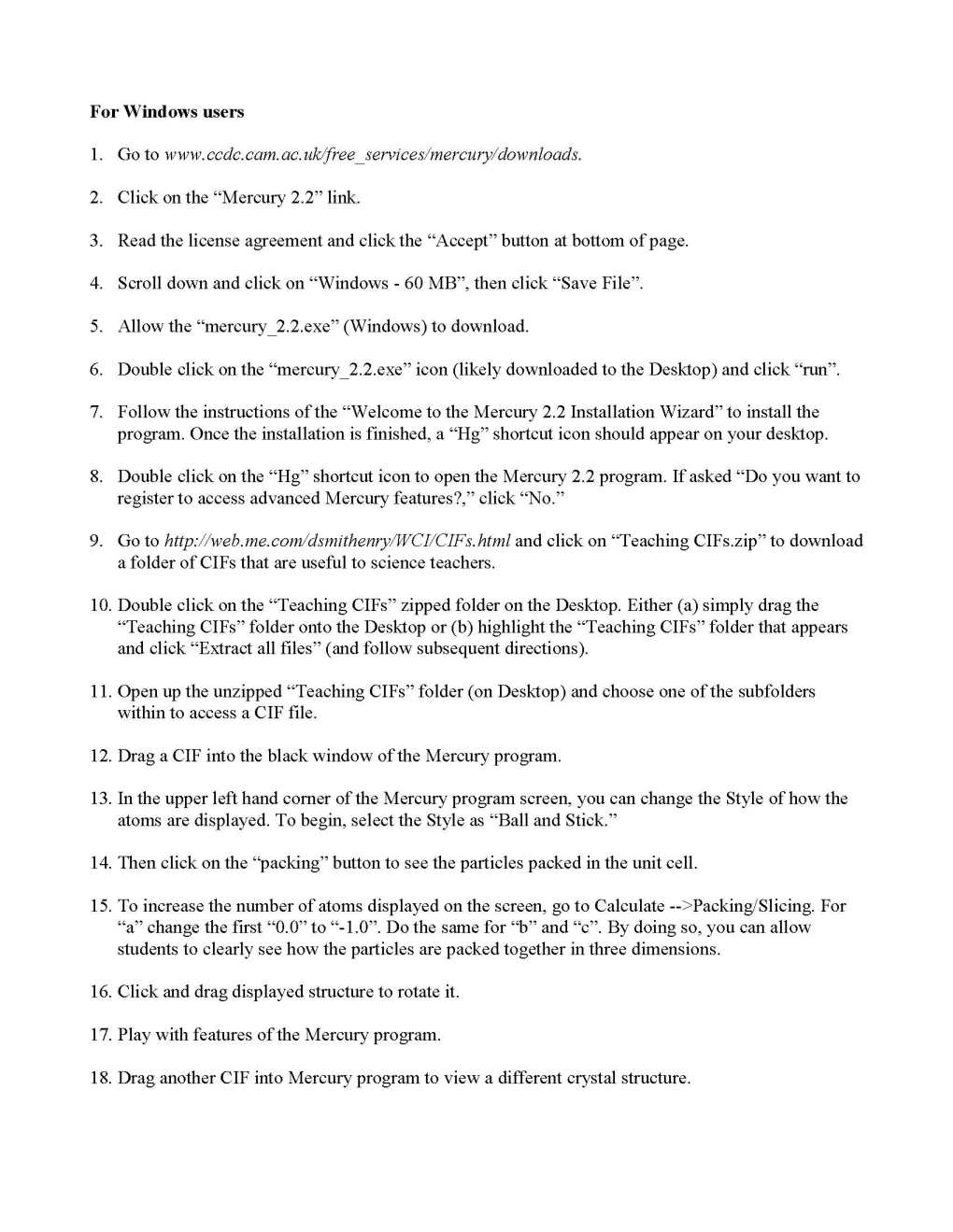


- #Mercury crystal program manuals#
- #Mercury crystal program manual#
- #Mercury crystal program full#
- #Mercury crystal program software#
#Mercury crystal program software#
#Mercury crystal program full#
Additionally, this file can be edited and a full report created using publCIF. This is a versatile file that can be read by many software programs for visualization and analysis. Compound.cif – This is the CIF file that should be submitted as supporting information when publishing a structure.An e-mail will notify you that your files are ready for you to view or download. Structures that have been solved and refined by IMSERC Crystallography staff will be uploaded to ReciprocalNet and deposited in the appropriate directory on the IMSERC file server. Single Crystal Crystallography Facility Files

Olex2 Cheat Sheet – Quick reference card of commands.
#Mercury crystal program manual#
#Mercury crystal program manuals#
User Manuals for Operating IMSERC's Diffractometers and their Software Additionally, please remember that crystals exhibiting twinning and diffuse scattering pathologies will not be made better by exposure to synchrotron radiation. Due to the nature of scheduling at APS or ALS beamlines, rush data collections cannot be performed. If after repeated attempts, your samples are still too small for data collection at Northwestern, Crystallography staff will make arrangements to have data collected at the APS or by our collaborators at ALS. If your crystals are deemed unsuitable for IMSERC facility diffractometers, your first step should be to attempt to recrystallize them. What do I need in order to publish this structure? If you have any doubts or concerns, please speak with a staff member. Crystallography staff typically provide such comments in the CIF file and in the report document that you can use in your publications. It does, however, indicate the need for comments in the text or supporting information to explain the warnings. If your checkCIF report has errors – even A-level alerts – this does not mean the structure cannot be published. Please keep in mind that a “perfect” checkCIF report is very rare – especially for the complex structures produced by researchers at Northwestern. Crystallography staff will work with you during the publication process to ensure your data will pass the review. Specific journals have certain requirements for accepting crystal structures, so not every journal will accept every structure produced. If you have received a structure report from us (MS Word document), then we believe your data can be published on some level. We always strive to collect publishable data every time we put a crystal on the diffractometer however, not every structure will be suitable for publication.


 0 kommentar(er)
0 kommentar(er)
